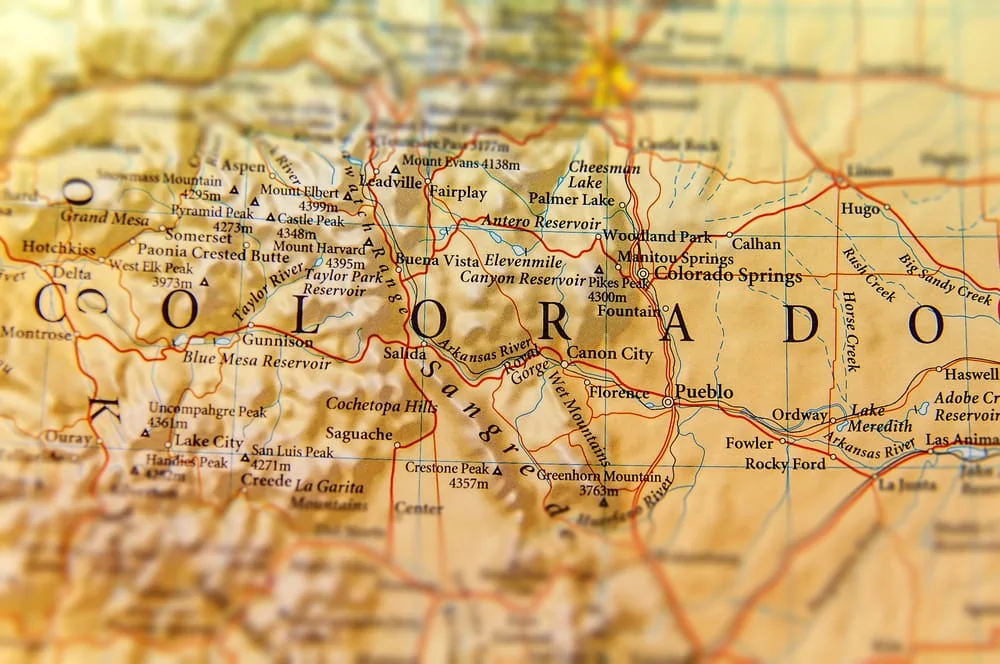
With so many trails and backcountry regions for everyone to enjoy, Colorado is a heaven for outdoor activities of all kinds. We have the answers to several of your major questions, and it’s always nice to know what you’re getting into before venturing out on the trail. Is there a black bear in Colorado? What kind would it be if it were so? If I see a bear on the path, what should I do? This guide covers everything you need to know about bears in Colorado.
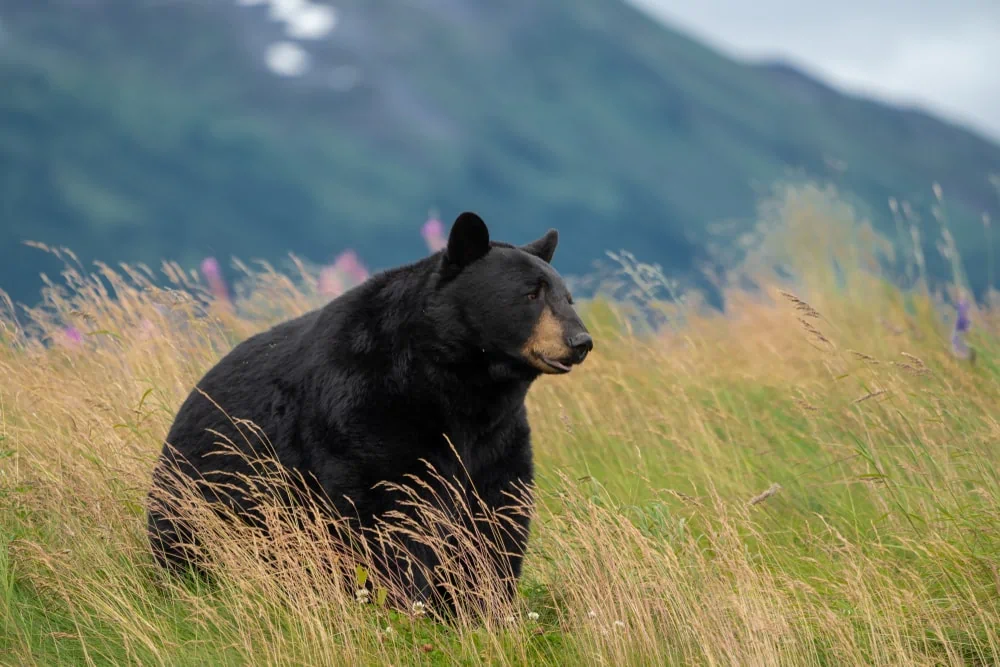
Bears do exist in Colorado, as a first point of clarification. The black bear (Ursus americanus) is the only species presently discovered in Colorado, and it is the most frequent sight in the United States. The North American black bear is the official name, but it’s a misnomer. Bears with varying degrees of brown to fully black hair may be found, but they are all considered black bears.
In the Rocky Mountains of Colorado, black bears may be found at mid to lower elevations, where food is still plentiful.
In Colorado’s San Juan Mountains, grizzly bears used to live. Since 1951, human interaction or grizzly bears becoming locally extinct in Colorado, they have had a smaller range than black bears.
Black Bears in Colorado
Physical Description

Colorado’s black bears have small tails and claws that don’t retract. In comparison to other bear species, their ears are spherical and their eyes are tiny. One of the most noticeable distinctions between the species is the shape of their face, as you won’t see a black bear and a grizzly bear at the same time in Colorado. From the tip of the snout to the top of the forehead, black bears have a straight facial profile, but grizzly bears have a dish-shaped profile.
Black bear fur is brown to blond in color, with medium brown and cinnamon being the most frequent hues of black bears observed in Colorado. Adults have brown eyes, while cubs have blue. Their skin is light gray.
Male black bears grow larger than female black bears on average. Males weigh 275 pounds or 125 kilograms on average, while females weigh 175 pounds or 80 kilograms on average. In areas where food is scarce, black bears are smaller on average because to the lack of food. When standing on all four feet, adult black bears measure 6 feet or 2 meters from nose to tail and 2 to 3 feet or about a meter from shoulder to shoulder.
Life Cycle of Black Bears

In the wild, black bears may live up to 30 years, although this is uncommon. Wild black bears are more likely to survive around 20 years. Black bears are active in Colorado from mid-March to early November, and spend the winter in dens after hibernating.
Except for mother bears with cubs, black bears are mostly solitary. Outside of peak mating season, it’s uncommon to see so many adults gathered. In Colorado, the mating season for black bears peaks in May and June, with the embryo being implanted later in the autumn rather than immediately after hibernation. The female’s body can be assessed after this delay, to ensure that enough energy is available to sustain the fetus until birth in the winter.
Every other year or so, females produce two to three cubs. Cubs are born in January and February, and their mother takes care of them for around a year and a half. In order to raise the previous cubs, adult females will give birth every two years on average. Womales, on the other hand, will have cubs less often when food sources are scarce.
Diet of Black Bears

Omnivores means Colorado’s black bears eat both plants and animals. The black bear eats about 90% grasses, berries, fruits, nuts, and plants, with insects and scavenged carcasses accounting for the remaining 10%.
During the seasons, black bears alter their feeding habits. They primarily eat leaves, flowers, and insects throughout the summer. Bears in the autumn consume more fruits and nuts. In order to prepare for hibernation, adult black bears consume 20,000 calories a day in late summer and early fall. The carbohydrates and fat in these fruits and nuts provide the nutrients necessary for hibernation storage.
Habitat and Range of Black Bears in Colorado

At mid and lower altitudes, where food is still available, black bears may be found across Colorado’s Rocky Mountains. In the autumn, black bears descend to lower elevations to easier find fruits and nuts. Black bears favor wooded regions with plenty of leaves, fruits, and nuts in general.
In order to take advantage of the best food sources, black bears in Colorado may have a home range of 20 to 200 miles or 32 to 320 kilometers throughout the year. Black bears have a keen sense of smell, and once they locate their favorite food sources, they can recall where it is. Bears have been known to travel up to 30 miles or 48 kilometers in order to locate the greatest fruit, and they may go 15 miles or 24 kilometers every day.
Primary Predators of Black Bears
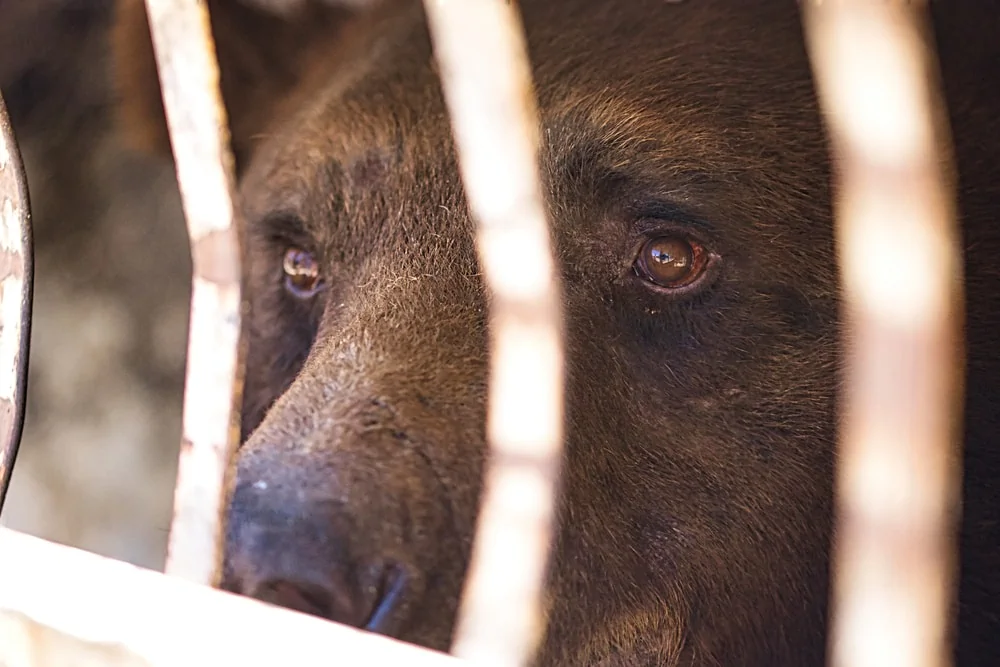
Black bears are the only Colorado predators that humans, mountain lions, and other bears.
Are Bears Migrating From States Bordering Colorado?

It’s tough to give precise information on individual black bears migrating from other states to Colorado since they may have considerable home ranges. Bears in the Rocky Mountains, near Colorado’s borders, are likely to cross state lines throughout the year in search of the finest food and other resources. Nevertheless, there is no proof that black bears are migrating permanently from neighboring states to Colorado.
Bear Management History in Colorado

In the nineteenth and twentieth centuries, bear management in Colorado followed a similar path as that of predator species across the United States. To eliminate the perceived threat to people and livestock, predator populations were actively reduced and even eliminated as settlement increased. Management tactics shifted in lockstep with changing national attitudes toward protecting natural ecosystems.
In 1863, Middle Park saw one of the first documented encounters with bears in Colorado. Colorado’s new settlers were encouraged to hunt black bears on their property in the 1870s by articles. Bear populations were eliminated as ranching expanded in Colorado throughout the twentieth century, since they were seen as a danger to wildlife. In order to boost the elk population, federal officials reduced the number of black bears in Rocky Mountain National Park in 1915. If bears and other predators were believed to be harming wildlife or property, the governor of Colorado authorized them to be killed without a license and out of season in 1941. In the 1940s, the state’s black and brown bear populations were estimated to be around 5,000 animals by US Forest Service surveys.
After the national environmental movement in the 1960s and 1970s, attitudes about hunting and the preservation of native species shifted. Individual bear removal was deemphasized in favor of living beside wildlife, and particular bears that became food-conditioned and aggressive were purposefully removed. In order to restore the original ecosystem, bear populations were permitted to grow.
Bear Populations in Colorado National Parks and Wilderness Areas
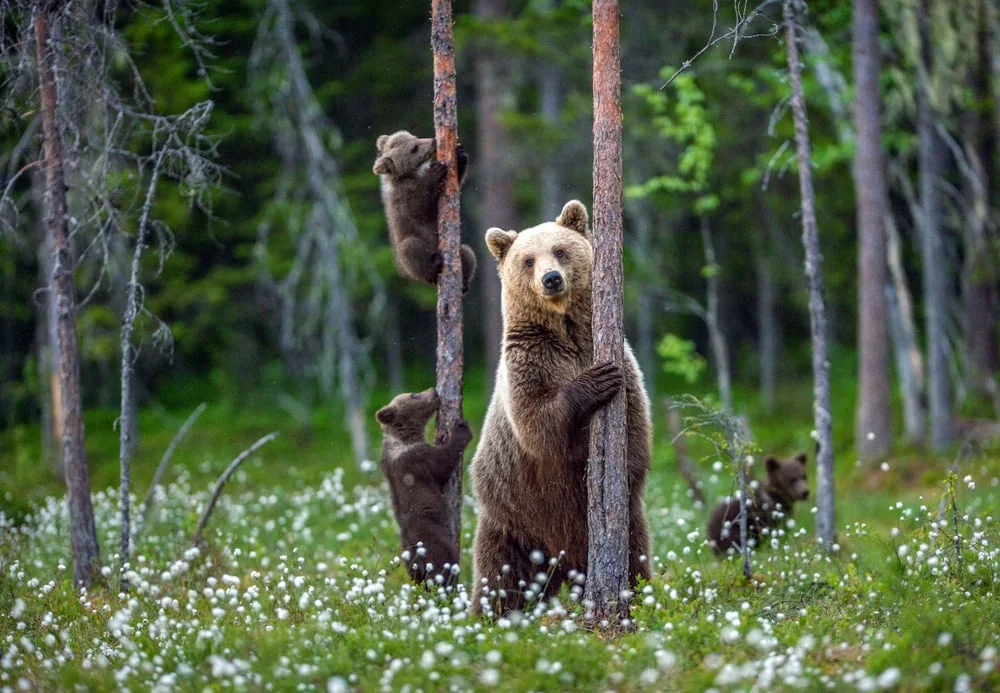
Several of Colorado’s national parks, state parks, and wilderness regions are ideal bear habitats. Several of these parks in the Rocky Mountains overlap with important bear habitat throughout the year, as they were built to safeguard unique mountain ecosystems and offer recreaion opportunities. Nonetheless, quantifying the number of bears in Colorado’s protected areas is difficult. To take advantage of the best resources, bears have enormous ranges that shift throughout the year.
They’re also mostly solitary, which makes population counting difficult. Black bears are currently believed to number between 8,000 and 12,000 in the state, with concentrations in Colorado’s Rocky Mountain areas.
It’s good sense to be bear aware while out and about, even if you don’t know precisely how many bears are in the national or state park you’re visiting. The following are recommended best practices for bear encounters.
Bear Hunting Regulations in Colorado
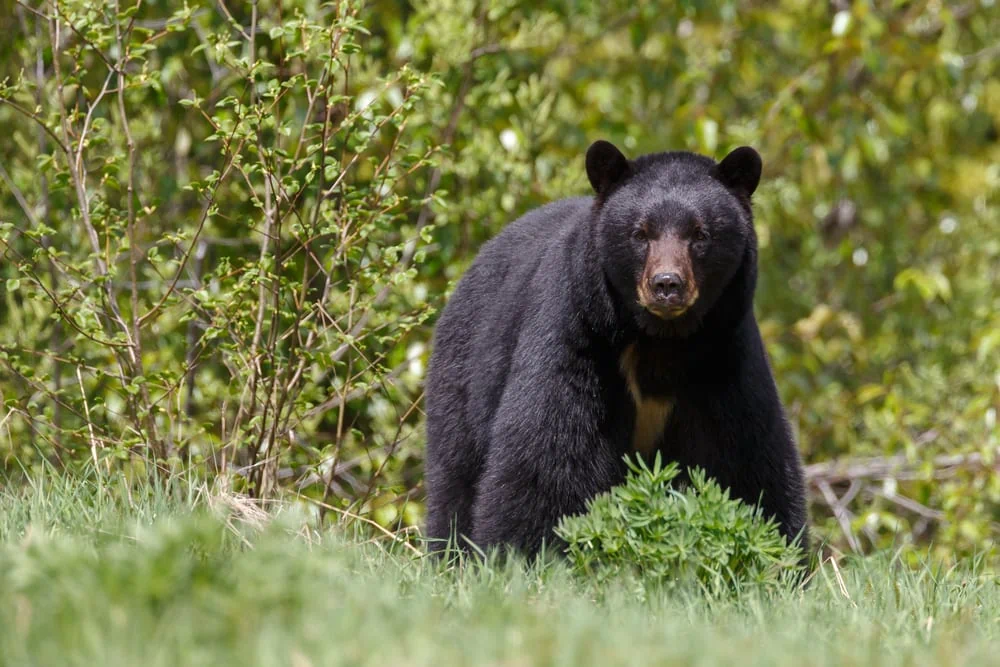
Colorado’s black bear population was first tracked and managed using the sport of bear hunting in 1935. During bear season, you may now hunt with rifles, archery, and black powder.
From the first week of September until the second week of November, archery deer hunting is permitted. Colorado Parks and Wildlife demands that all black bears slain by hunters be delivered to wildlife officials within five days, and hunting permits are necessary to take part in the bear season. This makes it possible for wildlife researchers and game officials to conduct surveys on current black bear populations.
Bear and Human Interactions

Bears are curious but cautious of things they don’t know, such as people. Before you approach too closely, black bears have extremely sensitive hearing, smell, and vision. In any case, if you do come across a black bear, there are certain important steps to take to ensure your safety.
What To Do If You Encounter A Black Bear?
- Leave slowly and quietly if the bear hasn’t acknowledged your presence. If the bear has seen you but isn’t acting aggressively, follow the same advice.
- Don’t run if a black bear approaches you. The bear may run much faster than you, so running might cause a chase reaction. The bear is usually only interested in assessing your presence and will depart as soon as it understands who you are. If the bear approaches you, stand your ground. Make as much noise as you can, throw little stones in the bear’s direction, and use whatever you have to defend yourself. Protecting yourself against black bears isn’t possible by pretending to be dead.
- If you spot cubs, quickly depart the area.
Bear-proof containers

Bears return for more food once they discover an simple source. Bear-proof containers should be used to prevent food-conditioning wild black bears. At campsites and other locations where humans and bears are more likely to meet, this is particularly important to keep in mind. A black bear’s nose can detect food up to five miles away, whereas a human’s nose is only 10 times stronger.
In Colorado’s bear country, all campsites will have bear-proof containers. You should double-bag your food and trash, if possible, and bring your own fully sealed container to use as a bear-proof container if you’re camping in the backcountry or the provided bear-proof containers are full.
Bear spray
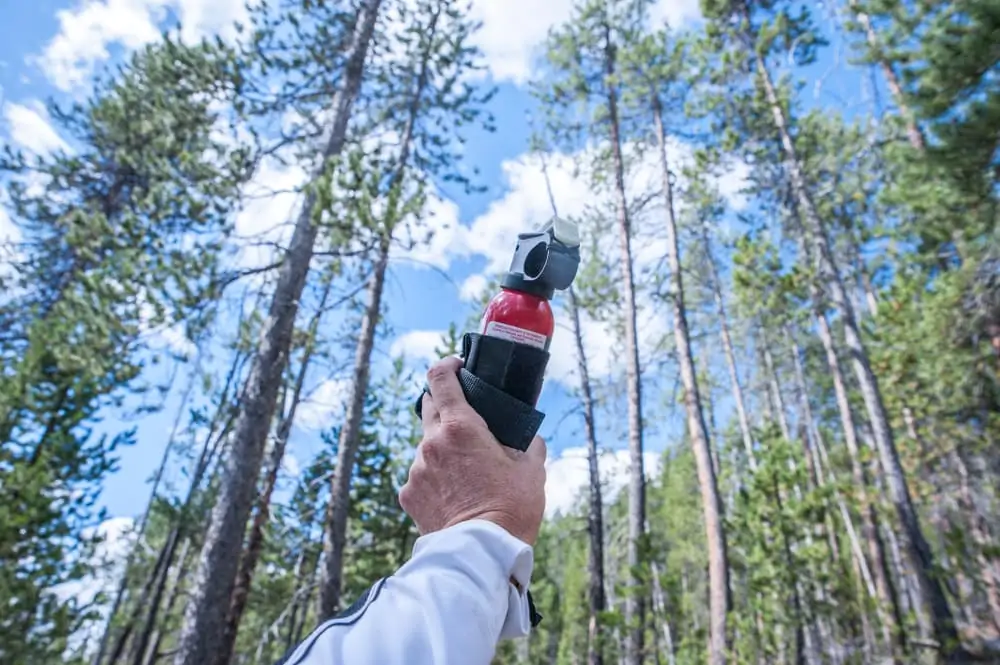
Bears spray is a powerful pepper spray that is more effective than firearms at keeping bears at bay. When hiking or camping in bear country, it’s always a good idea to carry bear spray.
Remove the safety clip, aim slightly downward, and start spraying when the bear is 30 to 60 feet or 10 to 20 yards away. It’s that simple with bear spray. Make sure the bear has to go through the spray in order to get to you. If the bear continues to charge, spray it in the face directly. Keep spraying until it leaves. Ask the packaging your bear spray came in for more specific details.
Aggressive bears

In Colorado, intentional bear attacks on humans are uncommon, but they do happen. A female black bear will most likely be protecting her cubs when it does, whether it is from a perceived danger or a person approaching them too closely.
Black bears, particularly if food sources like dumpsters and campsites are present, may become increasingly hostile when they get used to human presence. If a bear becomes accustomed to human presence and becomes more violent, it will be put to sleep in Colorado, as is the case with most of the United States.
Be bear aware

Before heading to bear country, the best thing you can do is become bear aware. A guide to cohabitating with bears has been developed by Colorado Parks and Wildlife, which we’ve summarized below.
- To keep from sneaking up on bears, hike in groups and make noise. If you’re hiking alone, wearing a safety whistle or bells is a good idea since it’ll make more noise and draw any bears’ attention.
- Be extra cautious during dusk or dawn hiking. At this time of day, bears are more likely to be active and mobile.
- Store food in bear-resistant containers and carry bear spray, as we previously discussed.
Threats from Habitat Loss and Climate Change

In Colorado, bear populations are currently stable. Bears are less susceptible to climate change than other species because they can readily adapt to whatever food source is available.
Yet, due to habitat destruction, black bear populations in Colorado might fragment. Bears may find it more difficult to live in areas that aren’t regularly disturbed by humans as towns expand and the typical range of people in Colorado expands.
Cultural References of Black Bears
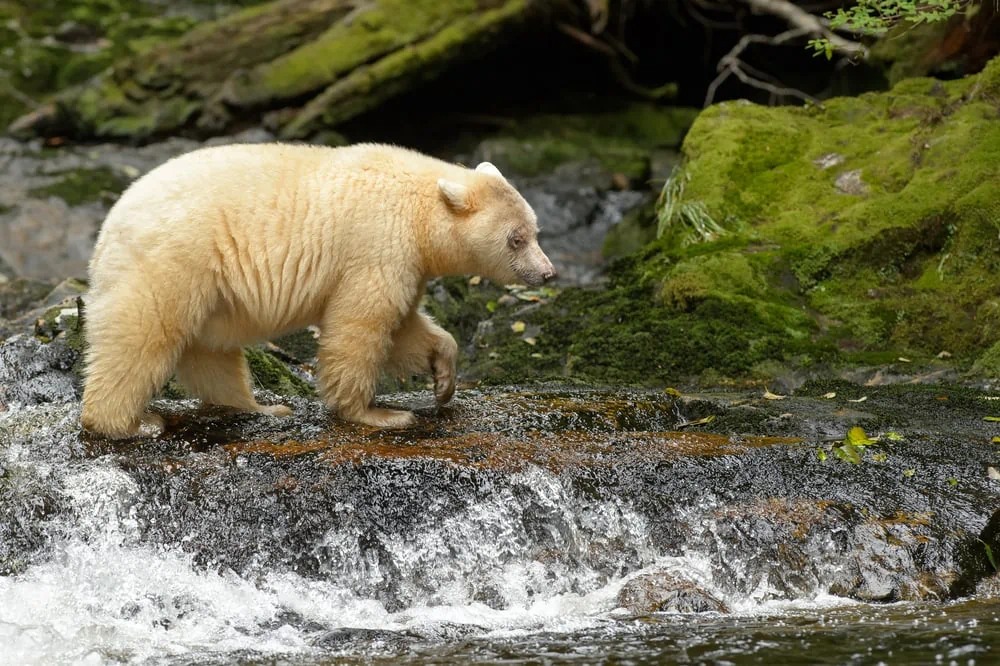
Bears are regarded as the smartest and second bravest animal in Ute culture. Bear Dances are held by the Ute people to build their personal connection with bears.
Bears with blonde and white fur have greater cultural significance to indigenous populations in Alaska.
